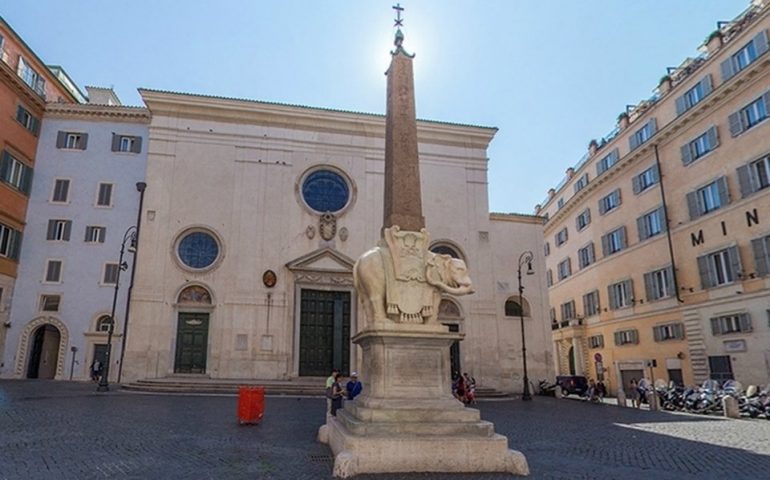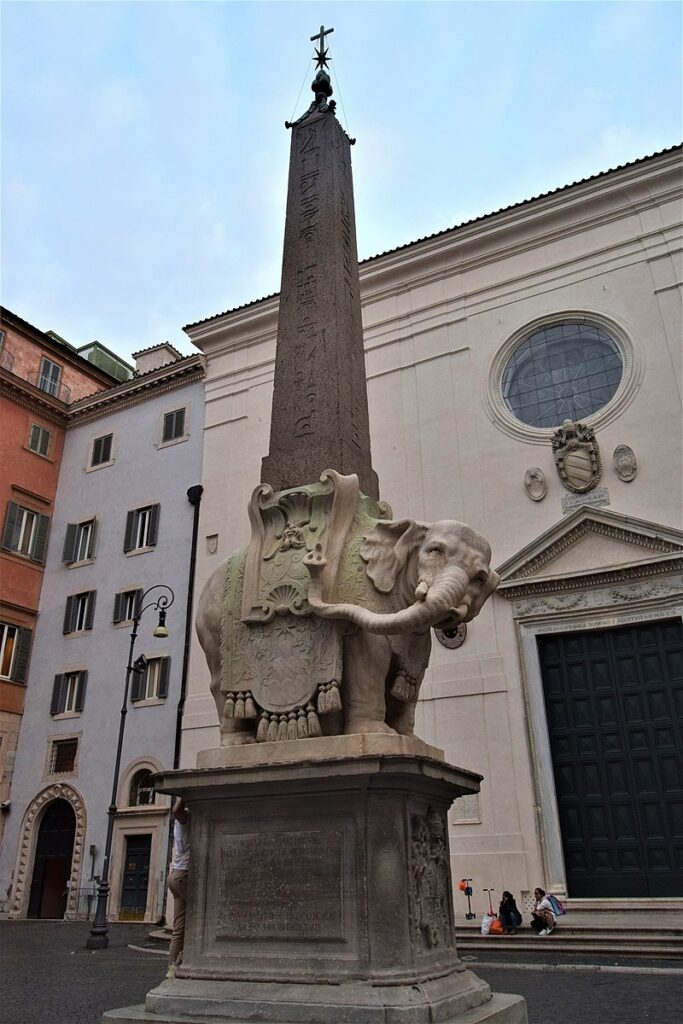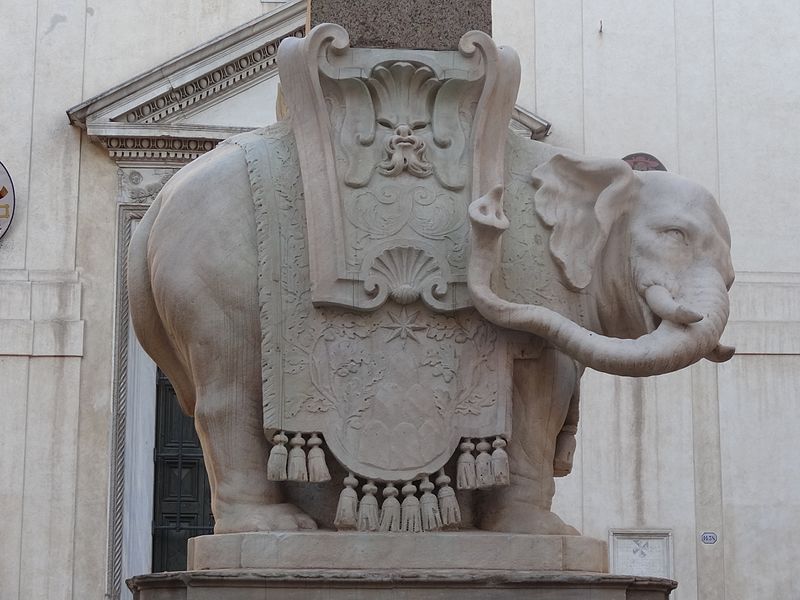Roman monuments: the obelisk of Minerva
The ancient and particular Egyptian obelisk was brought in the imperial era: it is supported by a small elephant, very dear to the Romans. Let’s discover his curious story together.

The Obelisk of Minerva (Piazza della Minerva) arrived in Rome with the obelisk of the Pantheon and that of Dogali, it was found in 1665 in the convent annexed to Santa Maria sopra Minerva and raised in front of the church in 1667 at the behest of Pope Alexander VII , according to a project conceived by Gian Lorenzo Bernini, with a baby elephant in the base.
It is one of the nine Egyptian obelisks in Rome, located in the Piazza della Minerva (the square of the basilica of Santa Maria sopra Minerva). The obelisk is positioned on the back of a marble elephant, sculpted by Ercole Ferrata based on a design by Bernini in 1667.
The whole monumental complex is also popularly known as the Pulcin della Minerva: “pulcino” in the dialect of the time stood for “porcino” , “little pig”, referring to the elephant “because of its small size and round shape, more suitable for a piglet”.

The obelisk is Egyptian, coming from Heliopolis under Domitian, together with the obelisks of the Pantheon, of Dogali and that of Boboli (which is in Florence), it dates back to the 4th century BC. it has a height of about 5.50 meters and its top reaches a height of 12.70 meters from the ground; originally it was located in the Temple of Isis in the Campo Marzio.
Its arrangement in the square was designed by Gian Lorenzo Bernini, who had it placed on the back of a marble elephant. The inscription on the base bears a phrase in Latin which we translate into Italian here: «Whoever here sees the signs of the Wisdom of Egypt carved on the obelisk, supported by the elephant, the strongest of the beasts, understands this as proof that a robust mind to support solid wisdom.

The elephant is a glorification of Pope Alexander VII. According to the nearby Dominican friars, the weight of the elephant would have created instability in the complex. For this reason, always according to the rumors of the people then handed down (and some contemporary poems that circulated) the angry Bernini designed the elephant, executed in 1667 by one of his pupils, Ercole Ferrata, so that he would turn his back on the convent of the obtuse friars, while the proboscis underlined its irreverent position and the tail, moved to the left, accentuated its offensive intention.
GET A QUOTE FOR YOUR ROME IN 2 DAYS TOUR:

